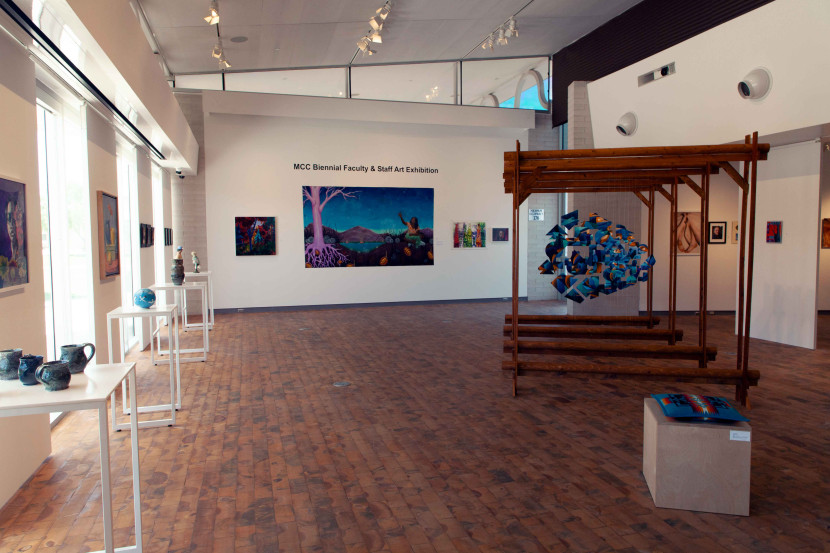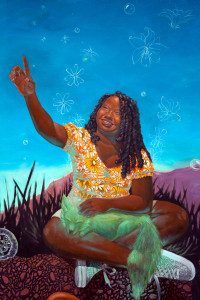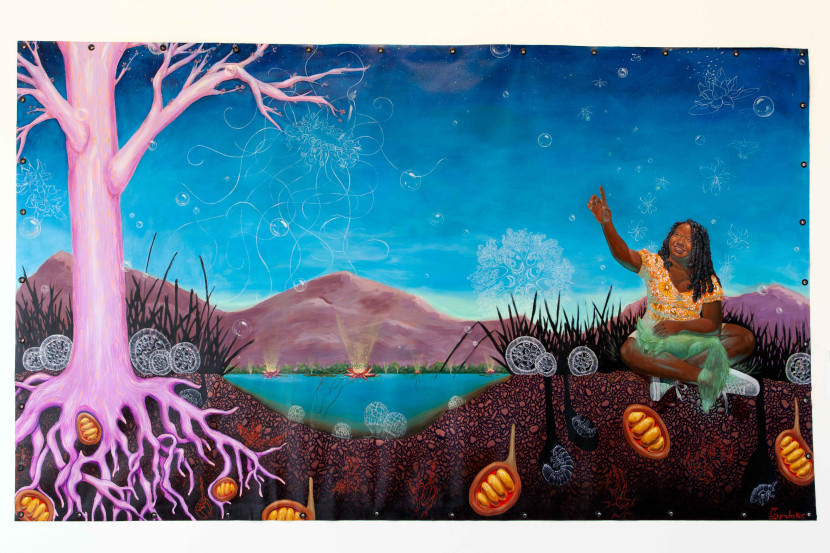
Oil and acrylic on canvas; 6’ x 10’
Gingher Leyendecker and Nicole Collins have built a deep friendship over time. “It started when I was her department’s liaison from the Counseling Department,” says Collins. “Gingher’s energy was calm, patient, kind, and understanding. I could see the passion she had as an educator.”

Leyendecker recently commemorated the friendship through her painting called Between Dreams, which depicts a dream-like state through the mind of a child. The child pictured is Collins’s daughter, Madison.
Leyendecker, Chair of the Art Department and Residential Faculty, describes her creative process:
How do you begin planning such a large-scale piece?
Leyendecker: I’ll see the elements of the work and begin creating sketches. I’ll start with individual parts that are going to be challenging. At the same time, I’m thinking about colors and how they will react to each other.
What was the next step?
Leyendecker: Once I felt good about this piece, Madison and Nicole came to campus and we took some photos. From the photos I created more sketches, taking elements from different ones to create my final choice.
How does that idea transform into the final painting?
Leyendecker: First an under-drawing is required to make sure the layout is the way I planned it in my sketches. It can be tricky going from a page in a sketchbook to a large scale painting, and it takes a lot of standing back and thinking about ratios.
How long did this project take to complete?
Leyendecker: The actual painting probably took two months, but I’d say the concept took about five. I really wanted to capture the idea of wonder and growth. Madison was the perfect subject because she is a young artist herself, and it was an honor to work with her and Nicole.
Leyendecker hopes to donate the piece to a children’s ward in a local hospital.

Collins, Executive Director of Diversity, Equity, and Inclusion (DEI) and Counseling Faculty, reflects on the meaning behind the artwork:
How did Madison become the subject of the painting?
Collins: Gingher posed the idea, and I was incredibly honored that she wanted to capture my daughter. Gingher has been a mentor to Madison as she steps into her gift as a fellow artist; she couldn’t imagine herself in a painting, but she trusted Gingher. That made her feel pretty special.
What was your reaction to seeing the completed painting?
Collins: As I walked into the gallery, I saw this enormous painting of my daughter flanking the opposite wall. I kept saying, “my baby,” over and over again. I wanted to cry, but I was trying not to embarrass my children. However, to my surprise, they encouraged me to let my feelings flow, and I let it all go.
As I stood in front of that painting, I saw my baby being represented. I saw other historically underrepresented children connecting with her. From the details that showed the stunning complexity of her hair’s coils, to the glow of her melanated skin that jumped off the canvas, I was in awe. I saw beauty.
What does this kind of project mean for us as part of the MCC Community?
Collins: So much of our day is devoted to working to continue the legacy of making MCC a great place to learn and work, but how much do we share with our colleagues what happens outside our campuses? We’re all multi-dimensional beings, and that recognition creates a greater sense of belonging for us all.
I encourage our MCC community to invest in seeing the “whole person” and not just what they do at our college. Our mindfulness of this not only humanizes folks, but gives us an opportunity to be more compassionate in our thoughts and actions toward others, and that’s the heart of DEI work.

